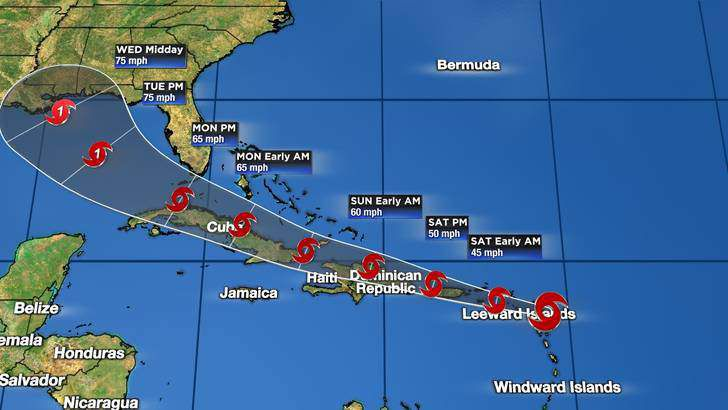The environmental monitoring and global tracking market are undergoing tremendous growth, including factors such as the increasing use of environmental sensors.
Air-quality and temperature monitoring sensors top the list in the government, consumer electronics, and public utility sectors. Moreover, growing public health implications and attention to pollution further contribute to accelerating the market development of the global tracking and environmental monitoring industry.
In 2021, the global environmental monitoring market’s value was over USD 15 Billion. By 2029, experts suggest a CAGR of 5% growth, leading it to cross over USD 21 Billion.
Before we discuss the market growth of this industry, its reasons, and trends, let’s start with a quick introduction to environmental monitoring.
What is Environmental Monitoring?
Environmental monitoring refers to the process of monitoring the environment with assessments of parameters like humidity, CO2, air purity, temperature, and more. The process helps maintain specific environmental parameters to uphold the environmental quality and reduce pollution-related dangers.
The core objective of environmental monitoring is to track numerous ecological factors and maintain a database of the acquired readings for further analysis. Data loggers are among the primary devices that help with environmental monitoring across various sectors that rely on the process.
What drives the market growth in the Global Tracking and Environmental Monitoring Industry?
The need for efficient natural resource management
Natural Resource Management or NRM refers to the sustainable utilization of natural resources like land, air, water, minerals, wild flora and fauna, and many more components. Most countries’ economies rely on these natural resources, including material resources like metals, non-metallic minerals, fossil fuels, and biomass. Using these sustainable resources benefits economic and environmental development by increasing productivity and reducing the depletion rate.
Reducing dependence on material goods and implementing business models can strengthen a country’s economy. As a result, short and long-term production costs, consumption, long-term societal expenses, and material inputs become minimized. With adequate and sustainable environmental monitoring, these countries and industries can limit the adverse environmental effects of their business. Moreover, they can work on better resource management of fisheries, mines, the agriculture sector, and more such ventures with prompt ecological monitoring.
Propagation of particle detection
There has been a rise in deaths across the globe due to increasing pollution levels and diseases. Air pollution is one prominent cause, and combating it has been on the agenda of numerous world leaders and international organizations. With global tracking and environmental monitoring, there can be apt particulate detection and estimation. As a result, this has accelerated the demand for environmental monitoring over the forecast period, which complements its market growth.
The demand for particle detection has increased over components like an increase in PM2.5 and PM10 concentration in the air. PM monitors indoors and outdoors are a component of environmental monitoring, and their use is witnessing a sharp growth. This growth parallels the rising air pollution levels caused by industrialization and urbanization in developing nations. In addition, the increase in health problems due to pollution has led to environmental monitoring systems and ecological nursing solutions becoming more prominent in developing countries, leading to increased market growth.
Government regulations and compliance management
To reduce environmental pollution, governments across the globe have come up with strict rules and regulations. From the level of automobile emissions to factory waste, setting standards that companies need to comply with to sustain their permits and legitimacy. As Dickson Data suggests, these factors also help expand the growth of the environmental monitoring market.
An example is the Ministry of Environment and Forests, which focuses on implementing policies and initiatives to conserve the nation’s natural resources like lakes, biodiversity, wildlife, and other natural resources. In addition, they have strategies and acts that emphasize pollution prevention and the development of cleaner technology to reduce industrial pollutants. These acts and methods require adequate environmental monitoring structures. It, therefore, offers lucrative generative opportunities for the global tracking and environmental monitoring industry, further expanding the market.
The use of the Internet of Things or IoT technology
The Internet of Things touches upon all possible human and technological aspects. The environmental monitoring market is no different. The utilization of IoT technology and nanotechnology in the global tracking and environmental monitoring market offers many growth opportunities Environmental protection, water safety, preservation of engendered species, and monitoring of harsh weather use various environmental monitoring technologies infused with IoT. They use sensors, like in the case of data loggers, to identify and quantify every kind of ecological change.
These IoT technologies are also available as nanotechnologies that work with matters of size ranging from 1 to 100 nm. The huge specific surface areas of nanomaterials and their strong relativities make them perfect adsorbents, sensors, and catalysts. One gets to detect numerous harmful substances at ppm and ppb levels in various environmental systems with the help of nanosensors. Researchers can acquire more sensitivity in detecting and identifying chemicals and biological substances in soil and air with nanotechnology-enabled sensor solutions.
The impact Of Covid-19 on the global tracking and environmental monitoring market
A significant growth trend in the environmental monitoring market began during the Covid-19 pandemic, and the industry has continued to flourish. Governments worldwide were increasingly in need of equipment for environmental monitoring for tasks like detecting coronavirus components in the air, safeguarding vaccines, laboratory works, and more. As a result, environmental monitoring technology got utilized to the fullest from the private to the public sector.
The requirements for measuring temperatures in public spaces like schools, malls, airports, train stations, and other areas have also helped grow the environmental monitoring market. In addition, there is a constant rise in global tracking and environmental tracking needs in sectors like healthcare.
The upcoming years are bound to witness the growth and development of the global tracking and environmental monitoring market with ever-expanding prospects.



